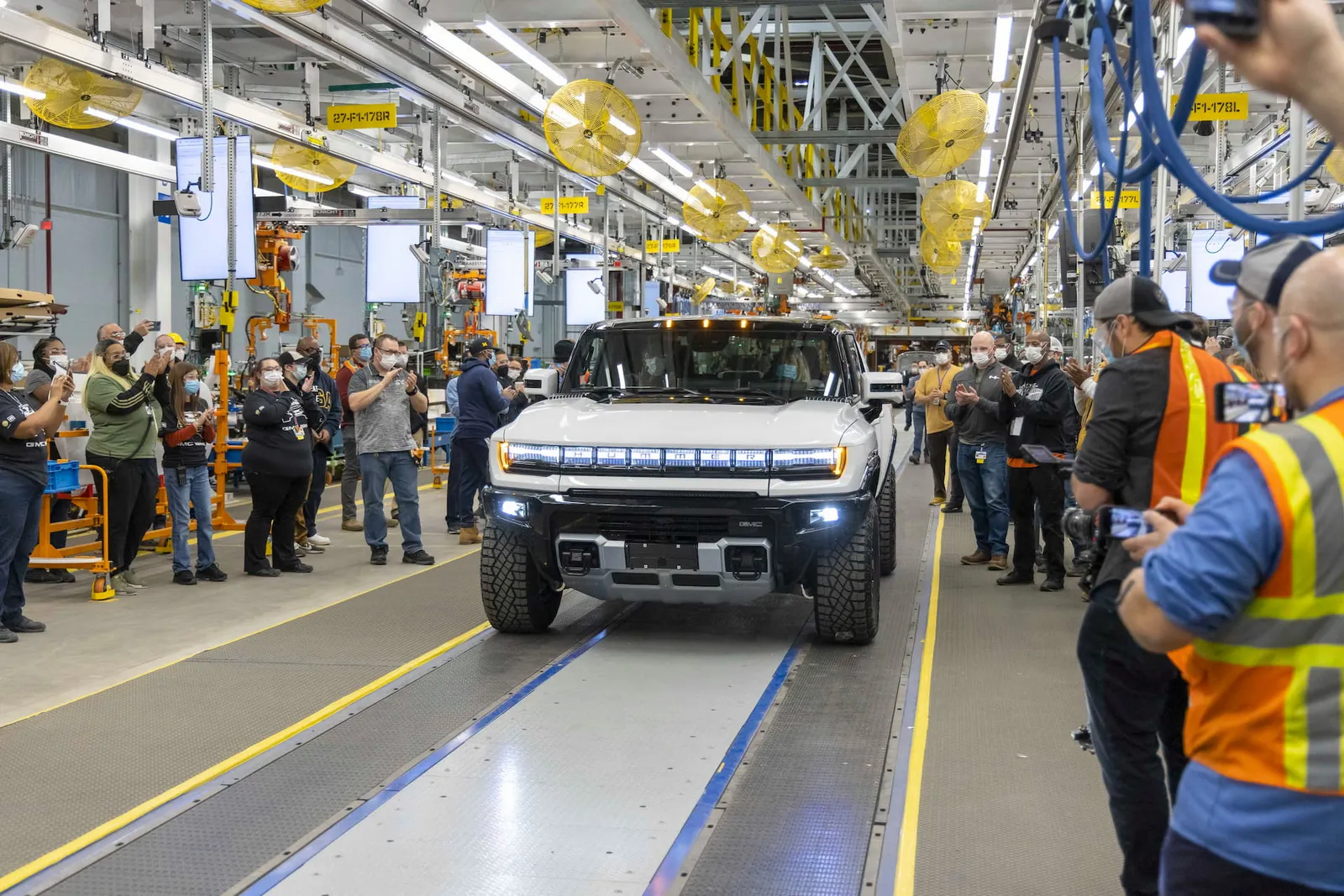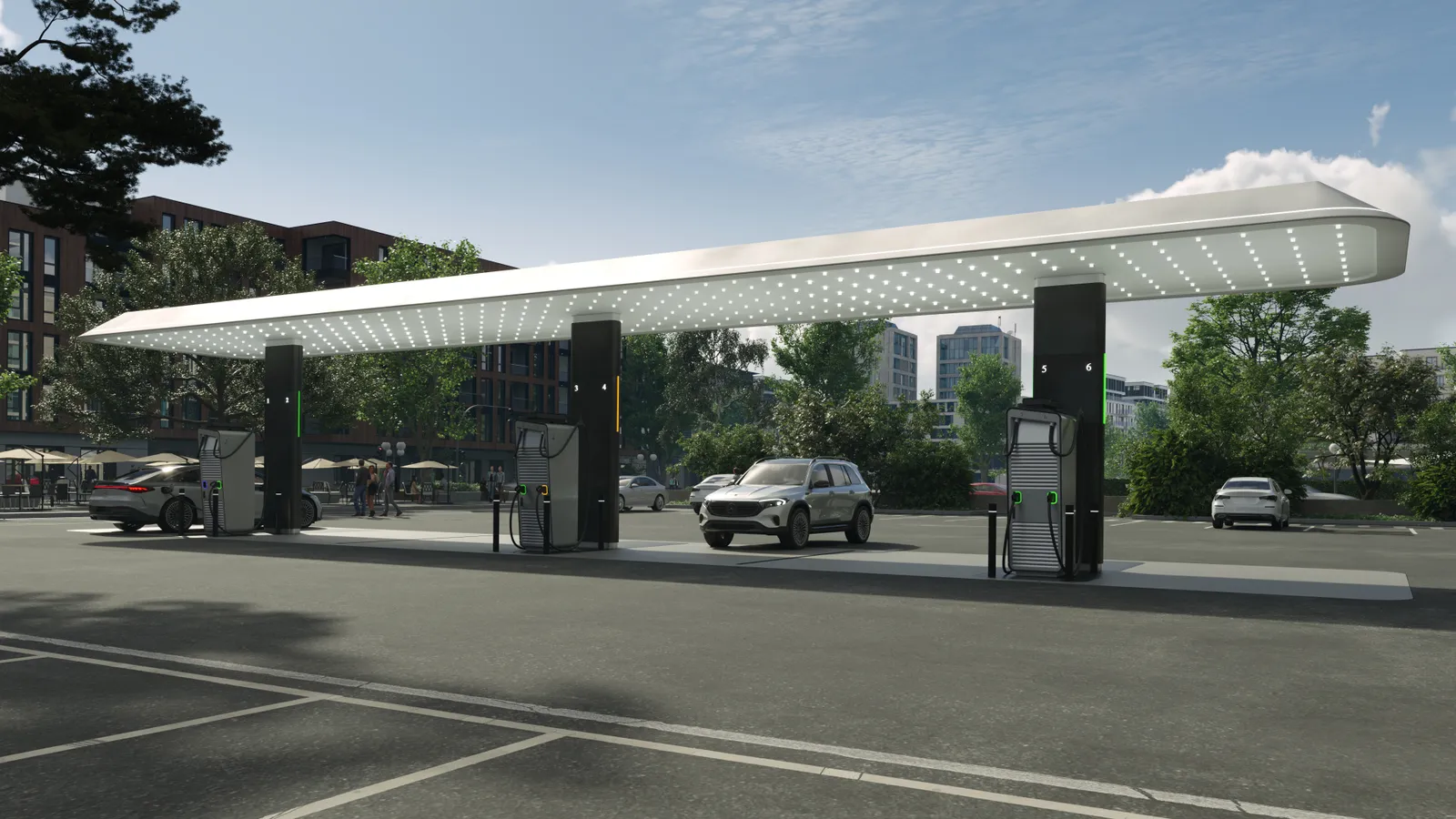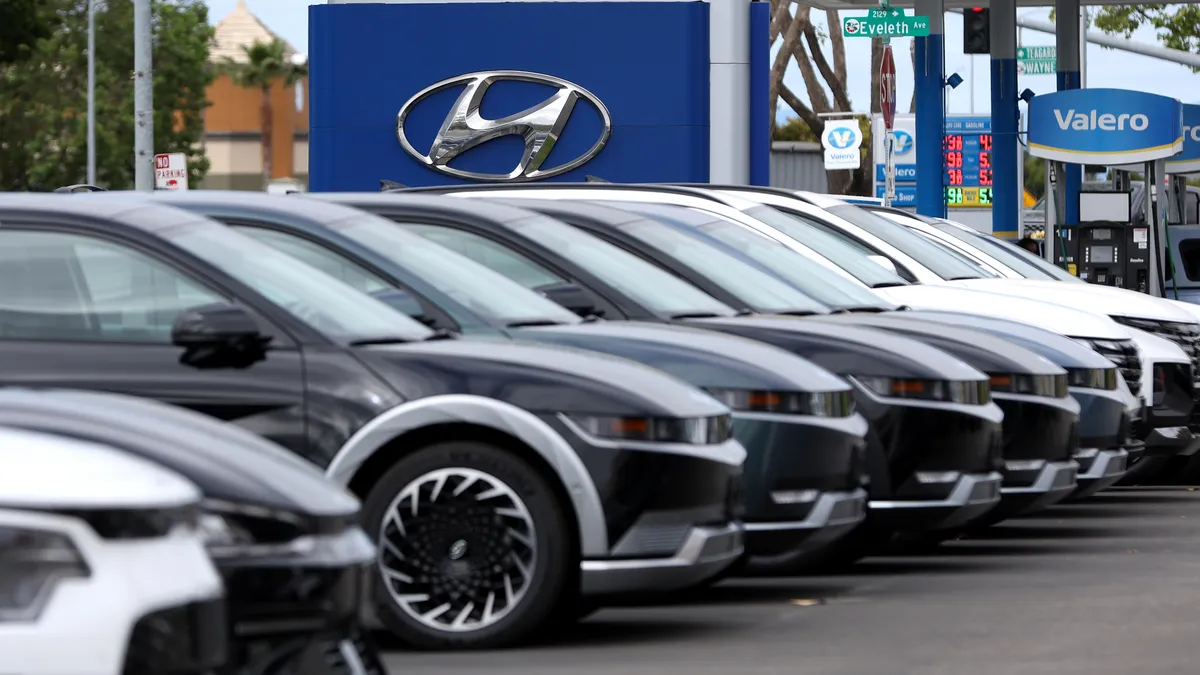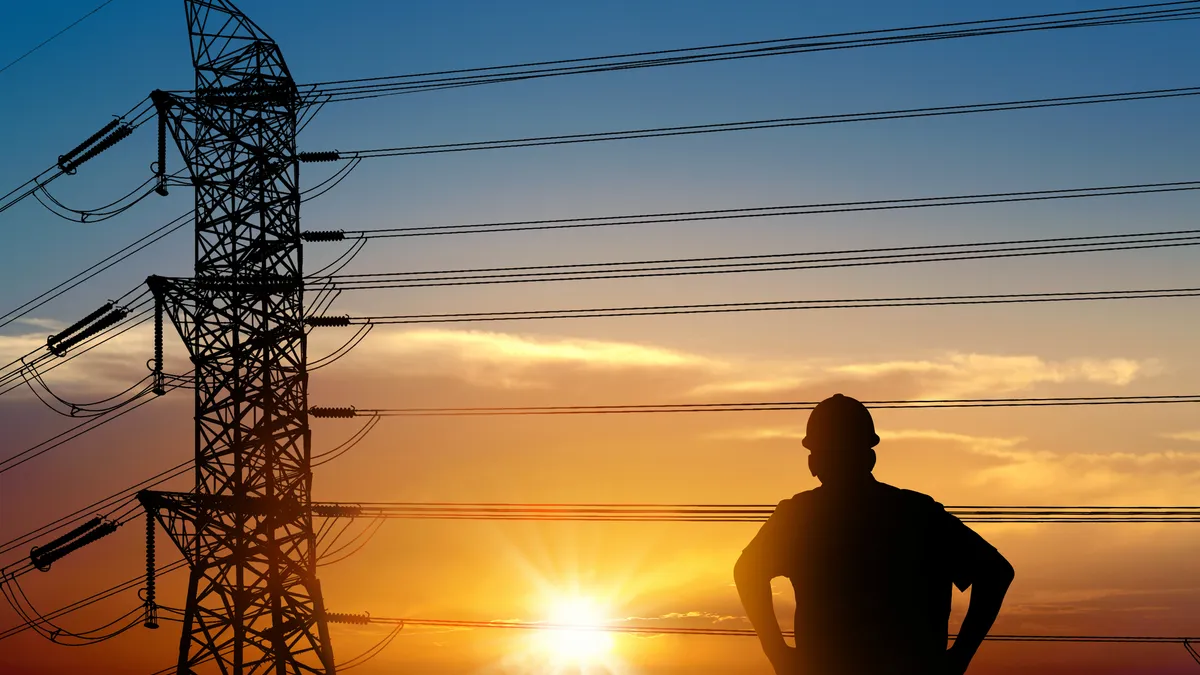In recent weeks, automakers like General Motors and Ford Motor Co. announced plans to curb the deployment of battery-electric vehicles, leading to a spate of news headlines declaring a worrisome slowdown in EV sales. Some experts say those concerns may be overblown, pointing to rising EV sales and dwindling inventories, but the situation is murky for automakers.
“Third-quarter sales are actually not that bad,” said Stephanie Brinley, principal automotive analyst for the Auto Intelligence service at S&P Global Mobility.
According to an estimate from Kelley Blue Book, U.S. EV sales reached an all-time high of 313,086 in the third quarter of 2023, a 49.8% year-over-year increase.
It was the first time quarterly EV sales topped 300,000, bringing EV sales to more than 873,000 through the first nine months of the year and all but ensuring the U.S. will surpass 1 million EV sales for the first time, possibly by Thanksgiving, KBB said. According to Cox, U.S. EV sales have increased for 13 consecutive quarters.
In the past few weeks, Q3 reports from GM, Ford and other automakers also show relatively strong EV sales.
Global EV quarterly sales grew by double or triple digits
Of note, Stellantis did not report how many EVs it sold in Q3 but said EV sales increased 37% year over year. In addition, Hyundai Motor Group, which does not report EV sales separately, sold nearly 169,000 hybrids, plug-in hybrids and EVs in Q3.

Why automakers are worried
Although EV sales reached record highs in Q3 and remain on track to set even more records, automakers are concerned that new car shoppers are adopting EVs at a slower rate, with EV market share increasing just 0.7% from Q2 to Q3.
“Market share hasn't done the same jump that it did last year,” Brinley said.
EV sales are still growing but not at the “frenetic pace” that 2022 and early 2023 sales figures would have suggested, Brinley said. That’s despite lower prices, more available models and larger inventories.
“Slowing EV demand growth is something that everybody's been talking about,” GM CFO Paul Jacobson said during the company’s earnings call last month.
With Tesla slashing prices 25% year over year, EV prices dropped to an average of $50,683 in September, a steep fall from a year prior when EVs were selling for over $65,000, Cox said. EV incentives made up 9.8%, or nearly $5,000, of the average transaction price, according to Cox.
Brinley said automakers are worried about lower prices because they make it more difficult to profit from EV sales.
“That seems to be where a lot of [the concerns about EV sales] are stemming from,” Brinley said.
High raw materials costs have also squeezed automakers' margins. According to an AlixPartners analysis, automakers are paying about $4,500 per vehicle for BEV-specific raw materials in the U.S. That’s 38% lower than in 2022 but twice 2020 levels.
“If you rush and you don't know where you're gonna get your margin from … it's not likely to magically appear later.”

Stephanie Brinley
Principal automotive analyst for the Auto Intelligence service at S&P Global Mobility
GM, for example, is struggling to produce EVs at a profit.
“Clearly, given the industry’s changing pricing and demand outlook and higher labor costs, we have work to do to ensure we achieve low to mid-single-digit EBIT EV margin targets in 2025, and grow our revenue and sustain strong 8-10% EBIT margins in North America,” GM Chair and CEO Mary Barra said in a letter to shareholders.
Lower prices are, in part, the result of increasing competition in the EV market. There were 14 more EV models available in the U.S. market in Q3 2023 than a year ago, and inventories were 97 days at the start of October after peaking at 111 days in early July, Cox said.
That’s a dramatic increase from earlier this year when inventories were about 52 days each for internal combustion engine vehicles and EVs. ICE vehicle inventories continue to hover between 52 and 58 days, just short of the industry ideal of a 60-day supply.
The combination of slower growth, lower prices and growing inventories has spooked automakers, leading some to change their EV plans to bolster their finances.
Last month, GM abandoned its plan to build 400,000 EVs from 2022 through mid-2024 and delayed the production start of electric trucks, including the Chevy Silverado EV and GMC Sierra EV. The automaker also jumped ship on its $5 billion plan to co-develop affordable EVs with Honda for North America.
During the company’s earnings call last month, Barra said the Detroit-based automaker is “taking immediate steps to enhance the profitability of our EV portfolio and adjust to slowing near-term growth.”
Ford also postponed about $12 billion in planned EV manufacturing spending, including pausing the construction of its $3.5 billion EV battery plant in Marshall, Michigan.
“We also remain bullish on Model e and our EV future, but clearly, the market is ... a moving target,” Ford CEO Jim Farley said during the company’s October earnings call.
The Volkswagen Group, meanwhile, scrapped its plan to build a $2.1 billion EV plant in Germany.
Automakers should expect EV sales to grow slower than they did during the past couple of years, especially now that ICE vehicle inventories have recovered, offering new car shoppers plenty of viable alternatives, experts said.
Stephanie Valdez-Streaty, director of industry insights at Cox Automotive, said the slowdown in EV adoption was probably inevitable. Early adopters were less sensitive to issues that continue to hinder EV adoption, such as high prices, limited infrastructure, shorter driving ranges and relatively long charging times, she said.
Product availability, meanwhile, continues to outpace infrastructure deployment and will, for the foreseeable future, increase competition and limit pricing power in a slower-growing market, experts say.

EV prices are still too high for consumers
An S&P Global Mobility survey published Wednesday shows high prices are the main reason why new car shoppers do not consider EVs, with nearly half (48%) of 7,500 consumers surveyed worldwide saying EV prices were too high.
“The luxury market has already been saturated.”

Yen Chen
Principal economist at the Center for Automotive Research
Yen Chen, principal economist at the Center for Automotive Research, said lowering prices could spur further EV adoption as the automotive industry runs into second- and third-wave adopter problems.
During the past few years, EVs were more price-competitive with ICE vehicles, especially in the luxury market, as new car prices soared about 30%, Chen said. But that’s starting to change as ICE vehicle production ramps up and logistics bottlenecks subside.
Even with prices dropping significantly since last year, most EVs are still priced like luxury vehicles, which many consumers can’t afford. Automakers need to offer more EVs at “mainstream” prices for adoption to accelerate, Chen said.
“The luxury market has already been saturated,” Chen said.
In the U.S., President Joe Biden's administration is trying to lower EV prices at the point of sale by allowing new car shoppers to transfer up to $7,500 in clean vehicle tax credits from the Inflation Reduction Act to a car dealer. Currently, shoppers need to wait until they file their taxes to claim the credits, making them harder to use.
Biden, however, hasn’t rescinded former President Donald Trump’s 25% tariff on vehicles made in China. That’s helped keep more affordable EVs out of the U.S. market, Chen said.
Reuters reported Wednesday that a bipartisan group of U.S. lawmakers want the White House to raise those tariffs even higher and figure out how to prevent Chinese companies from exporting their vehicles to the U.S. from Mexico.
While lower prices make it harder for automakers to build EVs profitably, they are essential to consumer adoption, experts say.

How automakers can address EV adoption
Valdez-Streaty said vehicle manufacturers can help boost EV sales by improving consumer engagement. Automakers, for instance, can better educate dealers on how to alleviate shoppers’ concerns about range, charging infrastructure, maintenance and other issues, as well as how to take advantage of tax credits and other policies that make EVs more affordable.
At the same time, automakers can partner with utility companies, community groups and other organizations that can help educate the public about EV adoption, Valdez-Streaty said.
“OEMs have to think about continuously reducing product costs and eking out as much pricing as they can.”

Arun Kumar
Partner and managing director at AlixPartners
Arun Kumar, partner and managing director at consulting firm AlixPartners, added that the lack of EV penetration among mass-market vehicles has made it more difficult for consumers to understand how switching to an EV would affect their lives since a smaller share of shoppers know somebody who owns one.
“Friends and family are significant influencers when it comes to buying EVs compared to ICE,” Kumar said.
Automakers can also make it easier for drivers to charge their vehicles.
Consumers have said, “‘Don't sell me a car and leave it up to me to figure out where to charge,’” Kumar said.
Car companies are starting to listen, with many planning to adopt Tesla’s EV plug, the North American Charging Standard, and give more drivers access to Tesla’s massive Supercharger network. Automakers, including Mercedes-Benz, are also launching their own EV charging networks and partnering with other vehicle manufacturers on EV charging joint ventures.
Reducing production and sourcing costs, however, is probably the most important thing automakers can do to boost EV sales since it would allow them to sell more vehicles at lower prices, experts say.
“OEMs have to think about continuously reducing product costs and eking out as much pricing as they can,” Kumar said.
Lower battery costs would go a long way. According to the U.S. Department of Energy, battery prices declined 89% from 2008 to 2022, from $1,355 per kWh to $153 per kWh. BloombergNEF, meanwhile, predicts prices could slip below $100 per kWh by 2026.
But there are other ways to cut costs, experts say. Tesla, for example, lowered the cost of assembling its vehicles by mounting seats to the vehicle’s battery pack and installing the assemblies from the bottom rather than installing seats through the door openings, as most automakers do, Kumar said.
Automakers must find their own way through the ‘profit desert’
Still, automakers will struggle to produce EVs profitably for a while, and they need to find a business model that works for them in the meantime, experts say. Kumar called it “the profit desert.”
“You have to go across the desert, or you're not going to see the profit. But at the end of the desert, there's water,” Kumar said. “Not everybody's gonna make it through the desert.”
During Mercedes-Benz’s Q3 earnings call, Harald Wilhelm, a member of the automaker’s board and head of finance and controlling and Mercedes-Benz Mobility, called the EV market “a pretty brutal space” due to greater competition. But the company has been able to weather the storm thanks to profitable ICE vehicle sales.
“This is exactly the benefit of one company transitioning from ICE into [battery-electric vehicles] rather than being [BEV] only,” Wilhelm added.
Tesla, meanwhile, has seen its market share fall to 50% in the U.S., while other EV-only automakers like Lucid struggle to meet production and sales targets.
The transition from ICE vehicles to EVs is complex, experts say, and many fits and starts will plague it.
“It’s a marathon, not a sprint,” Brinley said.
Brinley added that automakers are continuing to learn how to design, build and sell EVs more effectively. GM and Ford, for instance, indicated they changed their EV plans based on what they’ve learned. It’s a lesson other automakers can learn from.
“It's better to slow it down and be cost-effective than it is to rush and pretend you'll be able to find margin somewhere else. Because you won't,” Brinley said. “If you rush and you don't know where you're gonna get your margin from … it's not likely to magically appear later.”
























